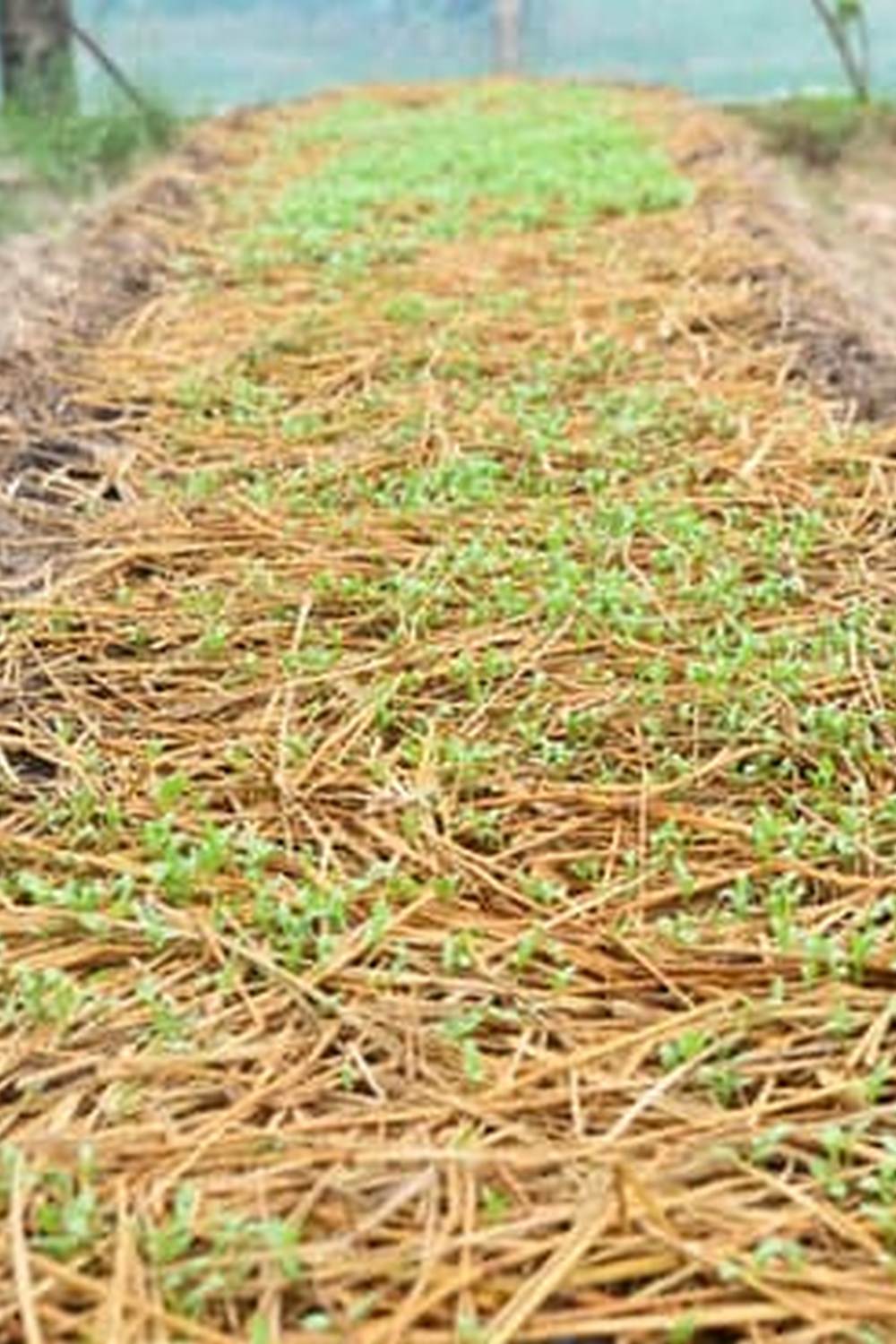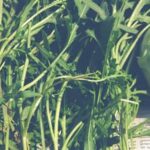Are you tired of spending endless hours pulling pesky weeds from your vegetable garden? Look no further than weed block fabric for vegetable gardens. This innovative solution helps to suppress weed growth, making it easier for you to maintain a thriving and productive garden. In this article, we will explore the different types of weed block fabric available, the benefits of using it, and how to properly install and maintain it in your vegetable garden.
Weed control is essential for the health and success of any vegetable garden. Weeds compete with your vegetables for essential nutrients, water, and sunlight. They can also harbor pests and diseases that can damage your crops. By using weed block fabric, you can significantly reduce the time and effort required for weeding, allowing you to focus on other important aspects of gardening.
There are several types of weed block fabric available on the market, each with its own unique features and benefits. From woven polypropylene fabrics to biodegradable options, there is a wide range of choices to suit your specific gardening needs.
In the following sections, we will discuss the advantages of using weed block fabric, provide a step-by-step guide on installation, offer tips for maintenance, and highlight common mistakes to avoid when using this helpful tool in your vegetable garden.
Types of Weed Block Fabric
When it comes to choosing the right weed block fabric for your vegetable garden, there are a few different options to consider. Each type of fabric has its own unique features and advantages, so it’s important to understand the differences before making a decision. Here are some of the most common types of weed block fabric and their key features:
- Woven Weed Block Fabric: This type of fabric is made from woven polypropylene fibers, which makes it durable and long-lasting. It allows water and nutrients to pass through easily, while still blocking out sunlight to prevent weed growth.
- Non-Woven Weed Block Fabric: Non-woven fabric is typically made from polypropylene or polyester fibers that are bonded together. It provides excellent weed control and is easy to cut and shape around plants. Non-woven fabric is also permeable, allowing air, water, and nutrients to reach the soil.
- Plastic Weed Block Fabric: Plastic weed block fabric is often made from recycled materials and provides a strong barrier against weeds. It is UV resistant and can effectively block out sunlight to inhibit weed growth. However, it may not allow for as much airflow or water drainage as other types of fabric.
Each type of weed block fabric has its own pros and cons, so it’s important to consider your specific garden needs before making a choice. Factors such as durability, permeability, and sunlight blocking capability will all play a role in determining which type of fabric is best suited for your vegetable garden.
In addition to the material composition, there are also different grades or thicknesses of weed block fabric available. These variations can affect the level of weed control provided by the fabric, as well as its longevity. Considering these factors can help you make an informed decision about which type of weed block fabric is right for your garden.
Benefits of Using Weed Block Fabric
Using weed block fabric in vegetable gardens can offer a wide array of benefits to gardeners. This section will discuss the advantages of using weed block fabric and why it is a valuable addition to any garden.
Prevents Weed Growth
One of the primary benefits of using weed block fabric in vegetable gardens is its ability to effectively prevent weed growth. By acting as a barrier, the fabric inhibits the growth of weeds, reducing the need for constant weeding and manual labor. This not only saves time and effort for gardeners but also helps maintain a clean and neat appearance in the garden.
Conserves Soil Moisture
Another advantage of using weed block fabric is its ability to conserve soil moisture. The fabric helps reduce evaporation by providing a protective layer over the soil, minimizing water loss due to sun exposure and wind. This can be especially beneficial during hot and dry periods, ensuring that plants have consistent access to moisture for healthy growth.
Improves Temperature Regulation
Weed block fabric also aids in temperature regulation within the soil. The fabric acts as an insulating layer, helping to maintain more stable soil temperatures throughout the growing season. This can be particularly beneficial for heat-sensitive vegetable crops, offering them a more favorable environment for root development and overall growth.
By understanding these benefits, gardeners can make informed decisions about incorporating weed block fabric into their vegetable gardens for improved plant health and easier maintenance.
How to Install Weed Block Fabric
Installing weed block fabric in your vegetable garden can be a beneficial way to keep your plants healthy and reduce the amount of time you spend weeding. Here is a step-by-step guide on how to properly install weed block fabric in your garden.
First, prepare the soil by removing any existing weeds, rocks, or debris from the area where you will be installing the weed block fabric. This will help ensure that the fabric lays flat and provides maximum coverage.
Next, measure and cut the weed block fabric to fit the dimensions of your garden bed. Make sure to use a sharp pair of scissors or a utility knife to make clean cuts and prevent fraying along the edges.
Once you have your fabric cut to size, carefully lay it over the prepared soil, making sure there are no gaps or overlaps. You can secure the edges of the fabric with landscape pins or heavy objects like rocks or bricks to keep it in place.
After the weed block fabric is installed, it’s important to create planting holes for your vegetable plants. Use a small knife or scissors to carefully cut “X” shaped slits in the fabric where you want to plant each seedling. This will allow your plants to grow while still being protected from weeds by the fabric.
Lastly, water your garden as usual, making sure that water penetrates through the fabric and reaches the soil beneath. Over time, this method of installation will help maintain a healthy and weed-free vegetable garden.
| Step | Description |
|---|---|
| 1 | Prepare soil by removing weeds and debris |
| 2 | Measure and cut weed block fabric to fit garden bed |
| 3 | Lay fabric over soil and secure edges, then create planting holes for vegetables |
Choosing the Right Weed Block Fabric for Your Garden
When choosing the right weed block fabric for your vegetable garden, there are several important factors to consider in order to ensure that you select the best option for your specific garden needs. One of the first things to take into account is the type of material used in the fabric.
Some weed block fabrics are made from polypropylene, while others are made from woven or non-woven materials. Polypropylene is known for its durability and resistance to UV rays, making it a popular choice for long-term use in gardens.
Another factor to consider when selecting weed block fabric is the permeability of the material. While it is important for weed block fabric to prevent weeds from growing through, it is also crucial for water and air to be able to reach the soil and plant roots. Look for a fabric that strikes the right balance between blocking weeds and allowing proper aeration and moisture penetration.
The size of your garden and the specific plants you are growing will also play a role in determining the best weed block fabric for your needs. For larger gardens, purchasing weed block fabric in bulk rolls may be more cost-effective, while smaller gardens may benefit from pre-cut fabric pieces. Additionally, some plants may require different levels of water retention or drainage, so it is important to choose a fabric that aligns with those needs as well.
Lastly, consider any additional features that may be beneficial for your garden. Some weed block fabrics come with built-in UV protection or have been treated with special coatings to increase their lifespan. Taking these factors into account will help you find the perfect weed block fabric for your vegetable garden.
| Factors to Consider | Considerations |
|---|---|
| Type of Material | Polypropylene durability and UV resistance |
| Permeability | Balancing weed blocking with proper soil aeration and moisture penetration |
| Garden Size and Plant Needs | Choosing between bulk rolls or pre-cut pieces based on garden size; considering different water retention and drainage needs |
Overall, taking these various factors into consideration will ensure that you choose the most appropriate weed block fabric for your vegetable garden. By selecting a high-quality fabric that meets your garden’s specific requirements, you can effectively reduce weed growth while promoting healthy plant growth without unnecessary maintenance or upkeep.
Maintaining Weed Block Fabric
Once you have installed weed block fabric in your vegetable garden, it is important to maintain it properly to ensure that it continues to provide effective weed control. Here are some useful tips for maintaining and prolonging the lifespan of weed block fabric in your vegetable garden:
1. Regular Cleaning: Over time, dirt, debris, and organic matter can accumulate on the surface of the weed block fabric. It is essential to regularly clean the fabric to prevent these materials from breaking down and creating a conducive environment for weed growth. Use a leaf blower or a gentle wash with a hose to remove any buildup on the fabric.
2. Inspect for Damage: Periodically inspect the weed block fabric for any signs of damage or wear and tear. Look out for tears, punctures, or fraying along the edges. Repair any damage immediately to prevent weeds from finding a way through the fabric.
3. Mulch Application: Applying a layer of mulch over the weed block fabric can help to further inhibit weed growth and improve moisture retention in the soil. However, it is important to choose an organic mulch that will decompose over time, as inorganic mulches can cause damage to the weed block fabric.
By following these maintenance tips, you can ensure that your weed block fabric continues to effectively suppress weeds in your vegetable garden and prolong its lifespan for years to come. Proper maintenance will help you get the most out of this valuable tool for maintaining a healthy and productive garden space.
Common Mistakes to Avoid When Using Weed Block Fabric
When using weed block fabric for vegetable gardens, there are certain common mistakes that gardeners often make. These mistakes can hinder the effectiveness of the fabric and lead to issues with weed control in the garden. Understanding these common mistakes and knowing how to avoid them is crucial for achieving the best results with weed block fabric.
Choosing the Wrong Type of Fabric
One common mistake that gardeners make when using weed block fabric is choosing the wrong type of fabric for their specific needs. Not all weed block fabrics are created equal, and different fabrics have different characteristics and features.
It’s important to consider factors such as permeability, durability, and UV resistance when selecting a weed block fabric for your vegetable garden. Choosing a fabric that is not well-suited for the specific conditions in your garden can lead to issues down the line.
Improper Installation
Improper installation of weed block fabric is another common mistake that gardeners make. This can include failing to properly secure the fabric to the ground, leaving gaps or overlaps in the fabric, or not allowing for proper drainage underneath the fabric. Proper installation is essential for maximizing the effectiveness of weed block fabric in preventing weeds from growing in your vegetable garden.
Neglecting Maintenance
Once weed block fabric has been installed in a vegetable garden, it’s important to continue maintaining it properly. Neglecting maintenance, such as not regularly checking for tears or damage to the fabric, can lead to problems over time. Weeds may be able to grow through damaged areas of the fabric, negating its purpose. Regular maintenance and inspection of weed block fabric can help prolong its lifespan and ensure continued effectiveness in controlling weeds in your vegetable garden.
Conclusion
In conclusion, weed block fabric offers numerous benefits for vegetable gardens and can greatly improve the overall health and productivity of the plants. By effectively controlling weeds, this fabric helps to reduce the competition for nutrients and water, allowing the vegetables to thrive and yield better produce. Additionally, it can save gardeners time and effort by minimizing the need for frequent weeding, creating a more enjoyable gardening experience.
When choosing a weed block fabric for your vegetable garden, consider factors such as durability, permeability, and UV resistance to ensure that it meets your specific needs. Proper installation and maintenance are also key to maximizing the lifespan and effectiveness of the fabric. By avoiding common mistakes such as inadequate soil preparation or using the wrong type of fabric for your garden, you can make the most out of this valuable tool.
Ultimately, implementing weed block fabric in your vegetable garden is a sustainable and eco-friendly way to control weeds and promote plant growth. With its many advantages, it’s worth considering incorporating weed block fabric into your gardening routine. So why not give it a try in your own garden? You may find that it makes a significant difference in the health and yield of your vegetable plants.
Frequently Asked Questions
Can I Use Weed Control Fabric in Vegetable Garden?
Using weed control fabric in a vegetable garden is not the best idea. While it can prevent weeds from growing, it also hinders the growth of desired plants and restricts water and nutrient absorption.
What Is the Best Weed Barrier for Vegetable Garden?
The best weed barrier for a vegetable garden would be organic mulch like straw or wood chips. These materials not only suppress weed growth but also break down over time, enriching the soil with organic matter.
Should I Put Weed Fabric in Raised Bed?
It’s generally not necessary to use weed fabric in a raised bed. Since raised beds are filled with quality soil and often kept well-maintained, using a weed barrier may not be needed and could hinder the natural ecosystem of the bed.

If you’re looking to get into vegetable gardening, or are just looking for some tips on how to make your current garden better, then you’ve come to the right place! My name is Ethel and I have been gardening for years. In this blog, I’m going to share with you some of my best tips on how to create a successful vegetable garden.





